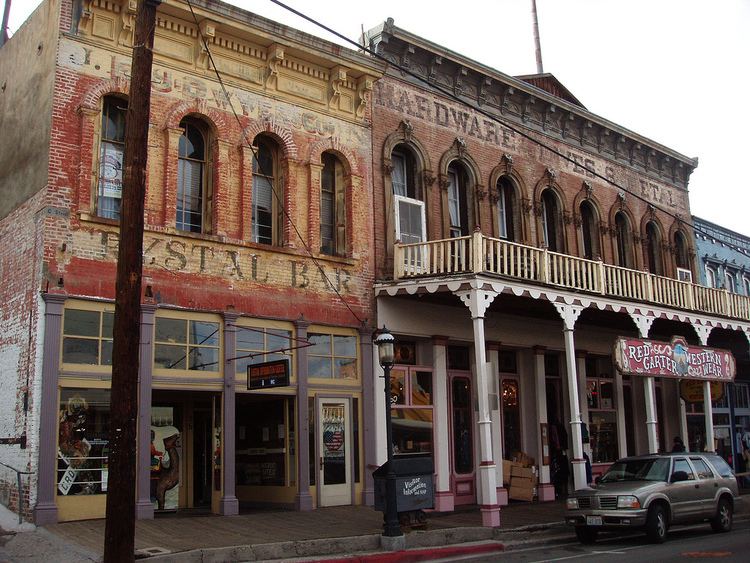Built 1859 NRHP Reference # 66000458 Opened 1859 Added to NRHP 15 October 1966 | Architect Unknown Designated NHLD July 4, 1961 Area 59.69 km² | |
 | ||
Location Virginia City, Nevada, USA Architectural style Bungalow/craftsman, Late Victorian Similar Piper‑Beebe House, Piper's Opera House, Chollar Mansion, Fourth Ward School, Mount Davidson | ||
Virginia City Historic District is a National Historic Landmark District encompassing the former mining villages of Virginia City and Gold Hill, both in Storey County, as well as Dayton and Silver City, both to the south in adjacent Lyon County, Nevada, United States. Declared a National Historic Landmark in 1961, it is one of only six in the state of Nevada.
Contents
Virginia City was the prototype for future frontier mining boom towns, with its industrialization and urbanization. It owed its success to the 1859 discovery of the Comstock Lode. It is laid out in a grid pattern 1,500 feet below the top of Mount Davidson. Most of the buildings are two to three story brick buildings, with the first floors used for saloons and shops. It was the first silver rush town, and the first to intensely apply large-industrial mining methods.
After a year in existence, the boomtown had 42 saloons, 42 stores, 6 restaurants, 3 hotels, and 868 dwellings to house a town residency of 2,345. At its height in 1863, the town had 15,000 residents. From its creation in 1859 to 1875, there were five widespread fires. The 1875 fire, dubbed the Great Fire of 1875, caused $12,000,000 in damages.
Today, Virginia City is but a shadow of its former glory; however, it still draws over 2 million visitors per year. In 2004, its condition was considered "threatened". One reason is that an inactive mining pit may cause some of the buildings that make up the historic nature of the district to slide into the pit. The cemeteries are constantly vandalized and are in danger of erosion. Continued use of the district for tourism is harming those historical buildings still in use, and neglect of privately held unused buildings increases the damage to the district.
Other NRHP listings within the district
Contributing properties
Contributing properties in the historic district include:
